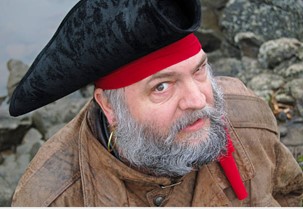Hello again!
If you are reading this, you came back for another dose – thank you!
“If you pierce your ears, do you see better?”
I’m always intrigued by people that have body piercings, and the question I always ask myself is – why?
I know it is self-expression just like tattoos (another topic for later discussion), but how do people with nose rings, for example, navigate it when they have a cold?
Do they use it as an ‘anti-nose-picking tool,’ or is it just for decoration, don’t those little nose studs get in the way when the catch at the back is right there in the middle of your nostril?
What about ‘tongue balls’ or whatever they are called? It must be like eating with a cherry pip permanently stuck to your tongue.
Don’t get me wrong, I am not criticizing or being judgemental; I am just intrigued as to how it all works. So, if you have a nose ring/ stud or a tongue ball, I would love to hear if it causes any problems. (Leave a comment on Facebook).
This brings me to this episode’s topic – ‘Anatomy of a Pirate.’ Pirates believed that if you pierced your ears, you would see better! If this is true, I may be up for it as I have terrible eyesight!
We can all relate to the pirate movie stereotype which includes a wooden leg, a bandana, and a parrot on the shoulder. Think Jonny Depp movies and ‘Pirates of the Caribbean.’ Although real-life pirates these days might not resemble this image all that closely, pirates from several hundred years ago were supposedly more aligned with the stereotypes we know today.
Two of the most significant parts of the classic pirate look related to their eyesight – the eye patch and the golden earring. Of the other typical pirate features, one can question whether they all accidentally had one leg blown off. We would hope that it was not a requirement of becoming a pirate to deliberately lose one leg!
The science of gold earrings
There are also many theories as to why they may have had parrots – as pets, to sell at some stage, to mimic their commands or even to eat if times got tough on a long voyage.
The earring, however, may have some scientific basis. It was a common belief that piercing your ear and having a precious metal hoop inserted (gold or silver) improved your eyesight. Not just pirates either, a lot of seafaring folks followed this ritual. The pirates (not renowned for their scientific prowess) believed that gold had magic powers.
Today there seems to be some scientific merit based on the principles of acupuncture. Depending on your attitude towards acupuncture some people say that there is an acupuncture point on the earlobe called the ‘Eye Point’ that can improve your vision. Acupuncturists are known to focus on this point in the ear to aid with general vision problems such as near-sightedness and conjunctivitis.
However any benefit that comes from that precise location in the ear lobe, and assuming a pirate did happen to ‘hit the jackpot’ and get the point, one would assume that putting an earring in would destroy its magic powers.
That black eye patch
Other parts of the body can also affect your vision which has something to do with the nerve network. Acupuncturists commonly want to stick their needles in your face and in your feet, for example. Obviously, vision was very important to pirates. Some say that the purpose of their eye patch was not to make pirates look mean (they had enough other features to do that!), but rather to give them some night vision.
Often embroiled in combat or as prime targets for mutiny, by wearing a patch over one eye, pirates could “trick” their vision into adjusting to darkness more quickly. The eyepatch was used to help prepare one eye to see in the dark, so when they went to the lower deck, they could swap the eye patch from one eye to the other and see with the eye that had already adjusted to dim light. This would help them to instantly see in the dark. Maybe this was some wired form of precursor to the night-vision goggles that you now see in army films.
So now we have the anatomy of the pirate – they have gold earrings to engage the eye spot, a patch to help with night vision, chop off their leg to activate the pressure points in the foot, and have a parrot for a spare set of eyes if all goes wrong! Maybe they were always saying “eye-eye”, to let others know they were fully armed.
My pirate ‘dad joke’
It reminds me of a (dad) pirate joke:
A seaman meets a pirate in a port, and talk turns to their adventures on the sea. The seaman notes that the pirate has a peg leg, a hook, and an eye patch. The seaman asks, “So, how did you end up with the peg leg?”
The pirate replies, “Aye, matey, we was in a storm at sea, and I was swept overboard into a school of sharks. Just as me men were pulling me out, a shark bit me leg off.”
“Wow!” said the seaman. “What about your hook?”
“Well,” replied the pirate, “We were boarding an enemy ship and were battling the other sailors with swords. One of the enemy cut my hand off.”
“Incredible!” remarked the seaman. “How did you get the eye patch?”
“A seagull dropping fell into me eye,” replied the pirate.
“You lost your eye to a seagull dropping?” the sailor asked incredulously.
“Not exactly,” said the pirate. “It was me first day with the hook.”
So maybe I won’t race out and get my ear pierced. I’ll have to put up with my glasses!
Hope to see you back next time. Don’t miss out. Stay subscribed and add your thoughts or any comments you have (especially if you have something nice to say!) on the social media links (Linked In or Facebook.
Till next time,
Calvin
Share this post: on Twitter on Facebook on Google+



2 thoughts on “As Time Goes By- Episode 1: Anatomy of a Pirate”
Love it – I need an earring!!!
Amusing, entertaining and well researched and written. I look forward to the next article.
Comments are closed.